For devoted cat enthusiasts, there’s a special allure to felines that evoke the majesty of wild cats like tigers, leopards, lions, and bobcats. If you dream of a home that feels like a personal, safe-to-cuddle zoo, then exploring Exotic House Cat Breeds might be the purr-fect path for you. These breeds offer a captivating blend of wild aesthetics with domestic charm.
Toyger Bengal Ocicat Cheetoh Egyptian Mau Highlander Savannah Serengeti Bombay Abyssinian Chausie American Bobtail Kurilian Bobtail Manx Pixie-bob
Key Considerations Before Welcoming an Exotic Cat Breed
Before you get swept away by the idea of an exotic feline gracing your living room, it’s essential to understand that owning one of these breeds can be a unique experience compared to traditional domestic cats. They aren’t just visually striking or rare cat breeds; their care and temperament can differ. Here are crucial aspects to consider:
Legal and Regulatory Factors
Bringing an exotic-looking cat into your home isn’t always as simple as adoption. Certain breeds, particularly those with closer wild ancestry like the Savannah cat, are subject to specific legal regulations. For instance, in many parts of the world, Savannah cats might need to be several generations removed from their wild African serval ancestors to be legally kept as pets.
Regulations can vary significantly by region and even within countries. Beyond breed-specific laws, housing agreements, whether renting or in a community, might impose restrictions based on size or perceived behavior traits associated with certain exotic cat breeds. Thoroughly researching local laws and housing policies is a vital first step before bringing an exotic beauty home. Unexpected legal hurdles are the last thing you want.
Activity Levels and Enrichment Needs
Exotic house cat breeds are not just about striking looks; they often come with a matching energy level. Reflecting their wilder heritage, these cats are typically more active, playful, and inquisitive than many domestic breeds. They need ample opportunities to express their natural behaviors, explore their environment, and engage their minds. Prepare to provide a stimulating environment with interactive toys, puzzle feeders, climbing structures, and perhaps even leash training for safe outdoor excursions. Breeds like Bengals and Chausies, known for their high energy, thrive on activity and engagement.
Mental stimulation is equally crucial for these intelligent felines. Puzzle toys, training sessions (yes, cats can be trained!), or even cat-specific apps can keep them entertained and prevent boredom-related mischief. A bored exotic cat is more likely to develop unwanted behaviors. If you’re considering an exotic breed, ensure you can commit to providing consistent playtime and mental enrichment to keep them happy and well-adjusted.
Litter Box Habits and Hygiene
When it comes to bathroom habits, exotic cat breeds can have particular preferences. Due to their often larger size compared to average house cats, a spacious litter box is essential for their comfort and hygiene. Cleanliness is also paramount. Frequent litter box cleaning is not just about odor control; it’s crucial for their health and willingness to use the box consistently.
Beyond size, some exotic breeds might exhibit preferences for specific types of cat litter, whether it’s unscented, a particular texture, or clumping versus non-clumping. Their larger size and active nature might also lead to more frequent litter box use and thus quicker waste accumulation. Be prepared for a potentially more demanding litter maintenance routine, including more frequent scooping and litter changes, to maintain a pristine bathroom space that your exotic feline will appreciate.
Exotic House Cat Breeds: Appearance and Temperament
Cats that look like tigers
Toyger
 Toyger exotic cat breed
Toyger exotic cat breed
Despite its playful, pun-inspired name, the Toyger is a breed that takes its tiger stripes seriously. Developed in the 1980s by crossing a Bengal with a striped Domestic Shorthair, the Toyger was specifically bred to resemble a miniature tiger, but without any wild cat ancestry.
Reaching up to 15 pounds, the Toyger is a medium-sized cat that perfectly captures the tiger’s aesthetic in a domestic package. Far from ferocious, Toygers are known for their friendly and affectionate personalities, making them wonderful family pets. Their intelligence and energy also mean they are highly trainable and can even learn tricks, adding to their engaging nature.
Cats that look like leopards
Bengal
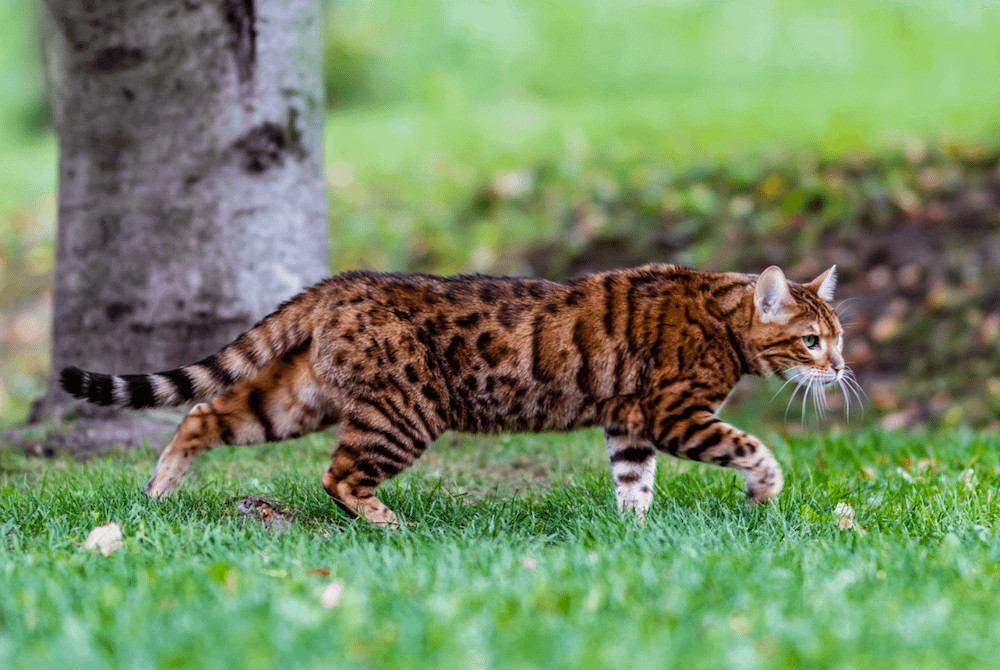 Bengal exotic cat breed
Bengal exotic cat breed
The Bengal cat truly bridges the domestic and wild worlds. A hybrid breed resulting from crossing an Asian Leopard Cat with domestic shorthairs, Bengals possess a striking leopard-like coat pattern and a captivating personality. They are renowned for their intelligence, love of water (unusual for cats!), trainability (including leash walking), and deep bond with their human families.
Bengals are muscular and athletic, weighing up to 18 pounds. Their adventurous spirit and need for interaction mean they thrive in homes where they receive plenty of attention and activity. If you’re seeking a dynamic and engaging feline companion, the Bengal is an excellent choice for an active lifestyle.
Ocicat
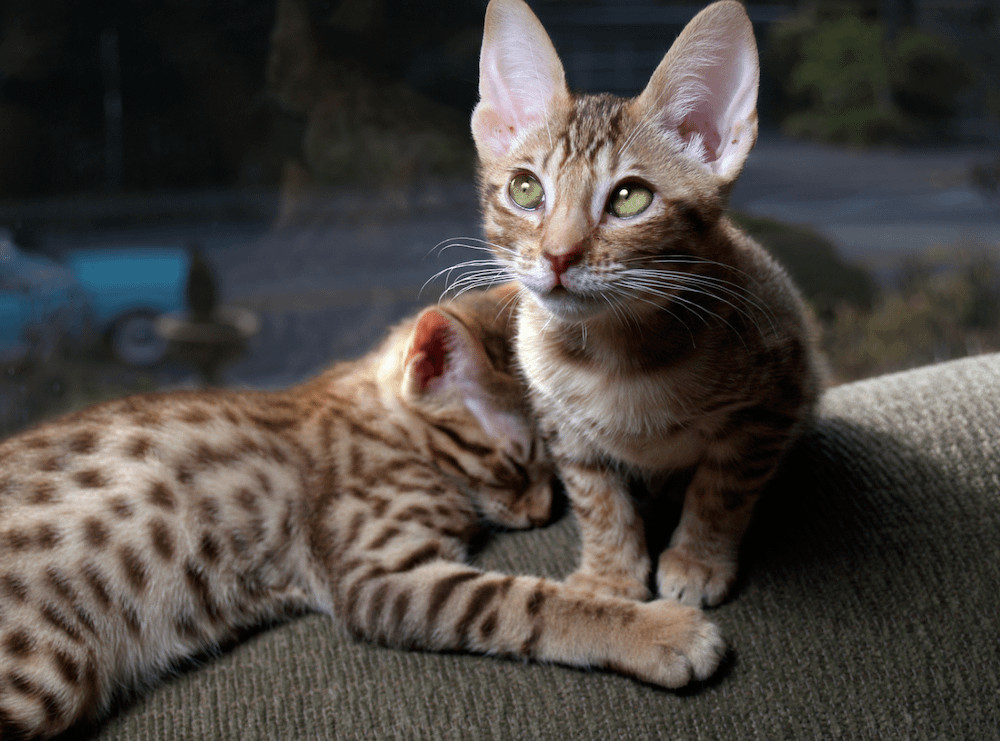 Ocicat exotic cat breed
Ocicat exotic cat breed
The Ocicat is a testament to serendipitous breeding. Originating in the 1960s from attempts to create a Siamese cat with Abyssinian-colored points, the resulting spotted kittens were so striking they became a breed in their own right. Further breeding with American Shorthairs expanded their color palette.
Ocicats can weigh up to 15 pounds and boast a variety of spotted coat colors, with the tawny spotted pattern most closely resembling a leopard. Despite their wild appearance, Ocicats are known for their friendly, outgoing, and people-oriented nature. They are highly social and thrive on being involved in their families’ daily routines.
Cheetoh
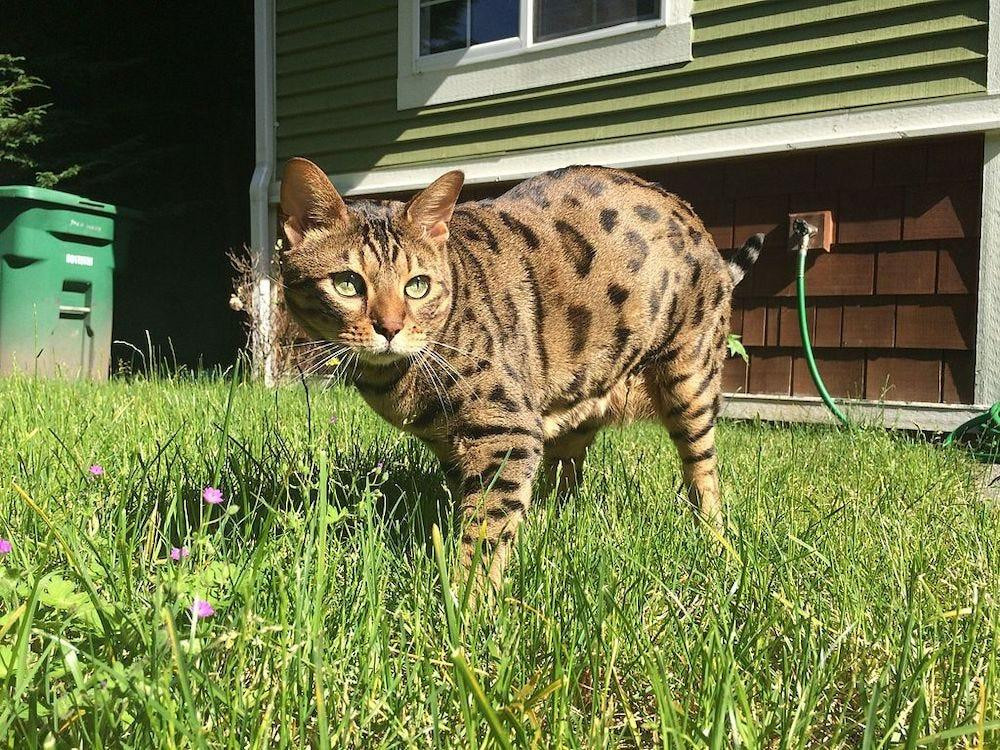 Cheetoh exotic cat breed
Cheetoh exotic cat breed
The Cheetoh cat is a relatively new and rare breed, developed by crossing Ocicats and Bengals. The result is a large, muscular cat with a cheetah-like spotted coat and a distinctive, almost stalking gait. Despite their powerful presence, Cheetohs are known for their affectionate, playful, and even snuggly personalities.
As one of the newest exotic house cat breeds, the Cheetoh is not yet recognized by all cat associations. They can grow quite large, exceeding 20 pounds, making them one of the bigger exotic breeds. Cheetohs are also intelligent and trainable, often enjoying leash walking and outdoor adventures.
Egyptian Mau
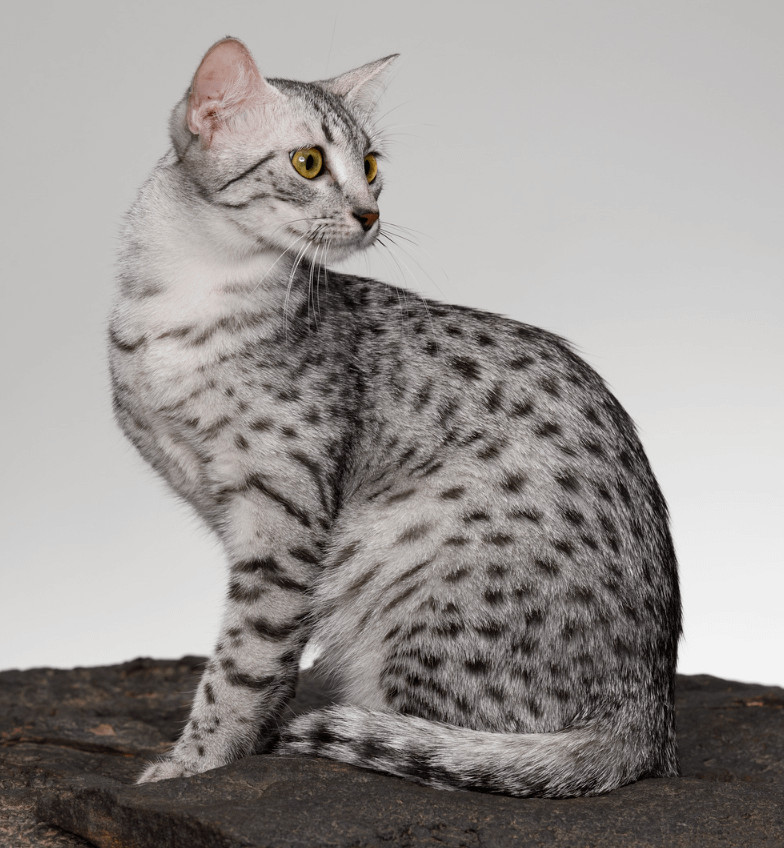 Egyptian Mau exotic cat breed
Egyptian Mau exotic cat breed
The Egyptian Mau holds a unique place among spotted cats as the only naturally spotted domestic breed. Their lineage traces back to cats depicted in ancient Egyptian art, suggesting they are one of the oldest domestic cat breeds. “Mau” itself is the Egyptian word for cat. They are also incredibly athletic, capable of running up to 30 mph.
Of all the leopard-like cats, the Egyptian Mau’s silver spotted coat can evoke the snow leopard. These cats are elegant and refined, with a strong connection to their history. They are known for being devoted to their families, intelligent, and active, though sometimes reserved with strangers.
Highlander
 Highlander exotic cat breed
Highlander exotic cat breed
The Highlander breed offers a striking combination of exotic features. With their spotted or marbled coats, they display leopard-like markings, while their bobbed tails and curled ears, inherited from the Jungle Curl breed, add a lynx or bobcat touch. This breed is man-made, resulting from a cross between the experimental Desert Lynx and the Jungle Curl.
Highlanders are playful and energetic cats that can reach up to 20 pounds. Despite their somewhat wild appearance, they are known for their affectionate and outgoing personalities, making them adaptable family pets. Their unique look and engaging nature make them a captivating breed.
Savannah
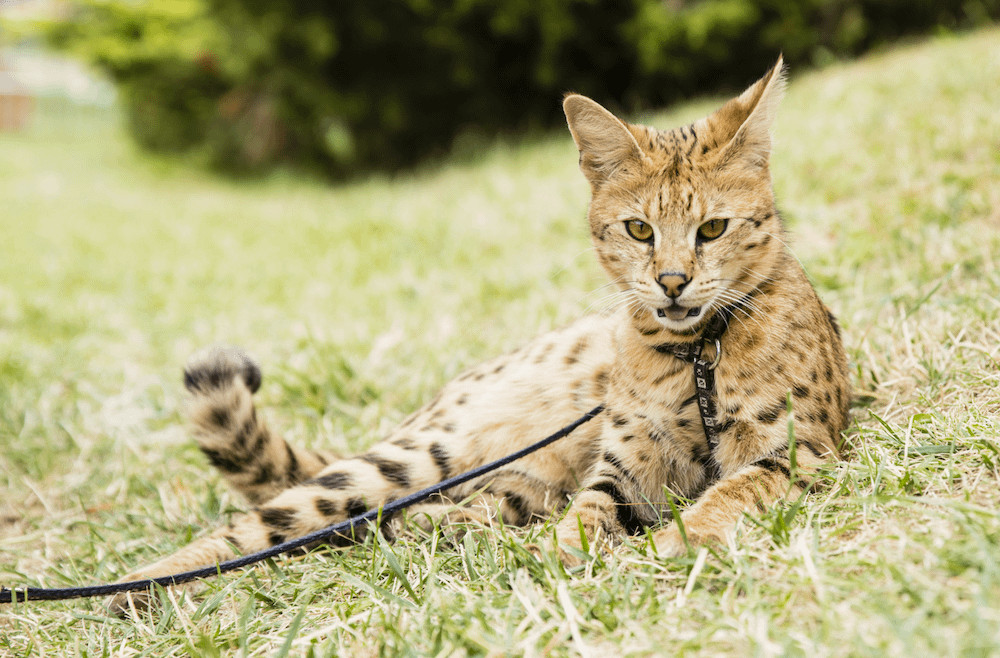 Savannah exotic cat breed
Savannah exotic cat breed
The Savannah cat stands out as one of the most overtly exotic house cat breeds due to its direct lineage from the wild African serval. This hybrid breed is known for its tall, slender build, large ears, and striking spotted coat, closely resembling its serval ancestor. Savannahs are incredibly active, adventurous, and can grow to be quite large, sometimes reaching 25 pounds or more.
Their strong hunting instincts mean Savannahs might not be ideal for homes with small pets like fish or birds. However, they are also known for their intelligence, trainability, and dog-like loyalty to their owners. Due to their wild ancestry, legal restrictions often apply, requiring Savannahs to be several generations removed from the serval for domestic ownership.
Serengeti
 Serengeti exotic cat breed
Serengeti exotic cat breed
The Serengeti cat was developed to resemble the African serval in appearance, but without any wild cat genes. This breed was created by crossing Bengals and Oriental Shorthairs, focusing on achieving a spotted coat and long legs reminiscent of the serval.
Serengetis are less common than many domestic breeds. They are known for their impressive jumping ability, reaching heights of up to 7 feet! While sometimes initially shy, they typically become affectionate and playful companions. Serengetis can weigh up to 15 pounds and are recognized by The International Cat Association as a preliminary breed.
Bombay
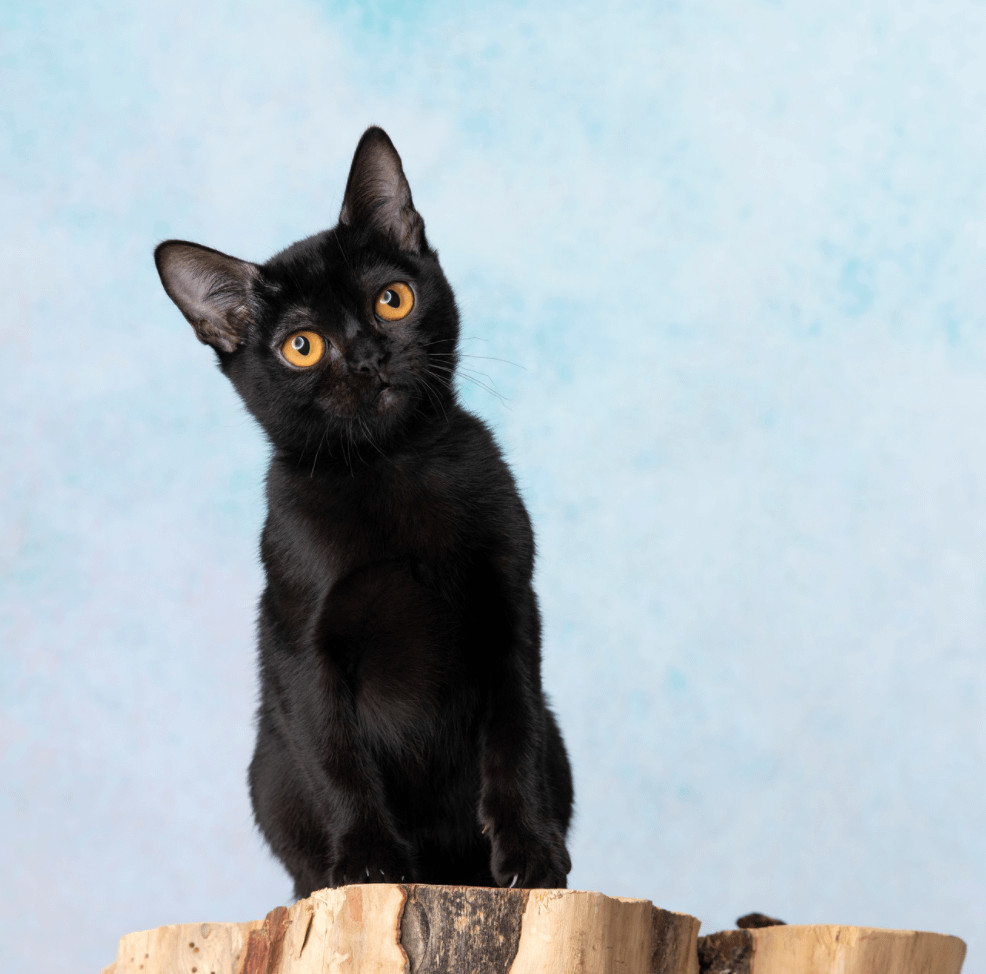 Bombay exotic cat breed
Bombay exotic cat breed
The Bombay cat is a tribute to the Indian black leopard, often referred to as a “parlor panther.” With their sleek, jet-black coat, striking copper eyes, and muscular build, Bombay cats exude a miniature panther-like elegance. They were developed to resemble a Burmese cat but with a black coat.
Bombays are playful, intelligent, and enjoy learning tricks. They are known for being very people-oriented, often greeting family and visitors at the door. Weighing up to 15 pounds, Bombay cats are affectionate and enjoy being close to their humans, sometimes even becoming “shadows” to their owners.
Cats that look like lions
Abyssinian
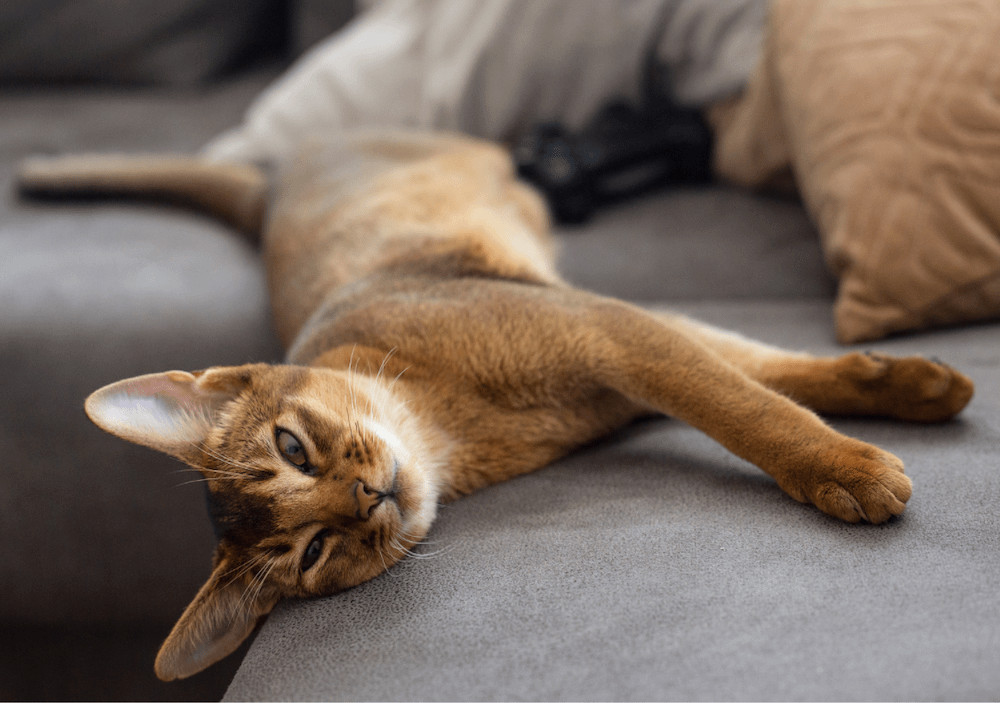 Abyssinian exotic cat breed
Abyssinian exotic cat breed
The Abyssinian cat is considered one of the oldest domestic cat breeds, possibly originating in ancient Abyssinia (now Ethiopia). Their ticked tabby coat pattern, where individual hairs are banded with color, gives them a resemblance to a miniature mountain lion or cougar.
Despite their wild look, Abyssinians are relatively small, weighing between 7 and 10 pounds. They are energetic, curious, and intelligent cats who thrive on interaction and play. While affectionate, they are not typically lap cats, preferring to be active and engaged in their environment.
Chausie
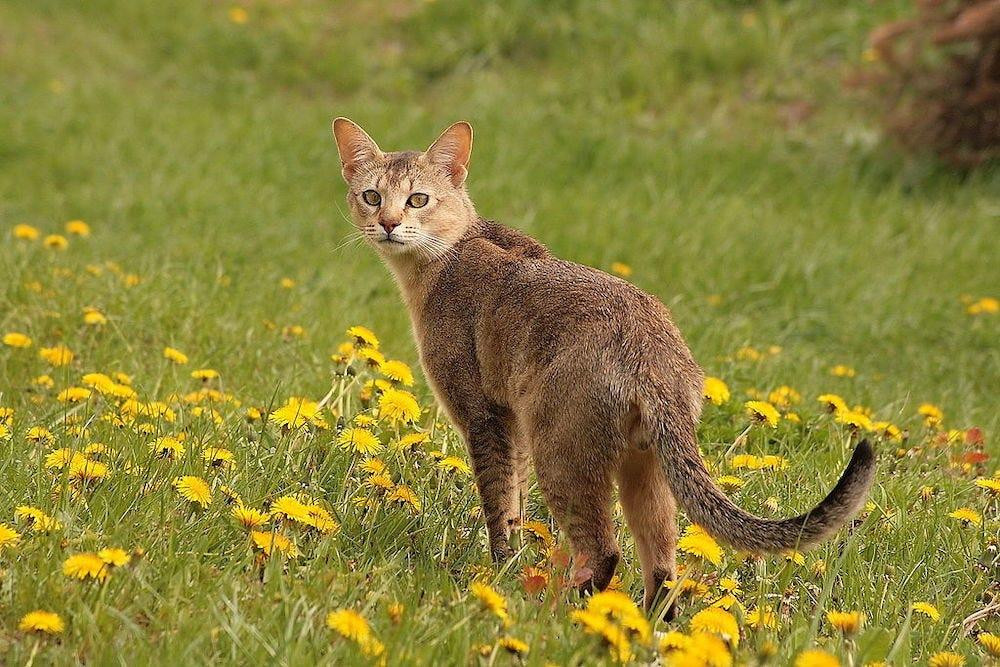 Chausie exotic cat breed
Chausie exotic cat breed
The Chausie cat boasts a direct link to the wild, being bred from the Jungle Cat (Felis chaus). This lineage gives them a proud and athletic build reminiscent of a lioness. Jungle Cats were even revered in ancient Egypt and have been found mummified in tombs. “Chausie” is derived from the Latin name for Jungle Cat.
Chausies are a larger exotic house cat breed, reaching up to 25 pounds. They are known for their active and intelligent nature, enjoying activities like leash walking and even playing fetch. While possessing a wild heritage, Chausies are also known to be social and enjoy human companionship.
Cats that look like bobcats
American Bobtail
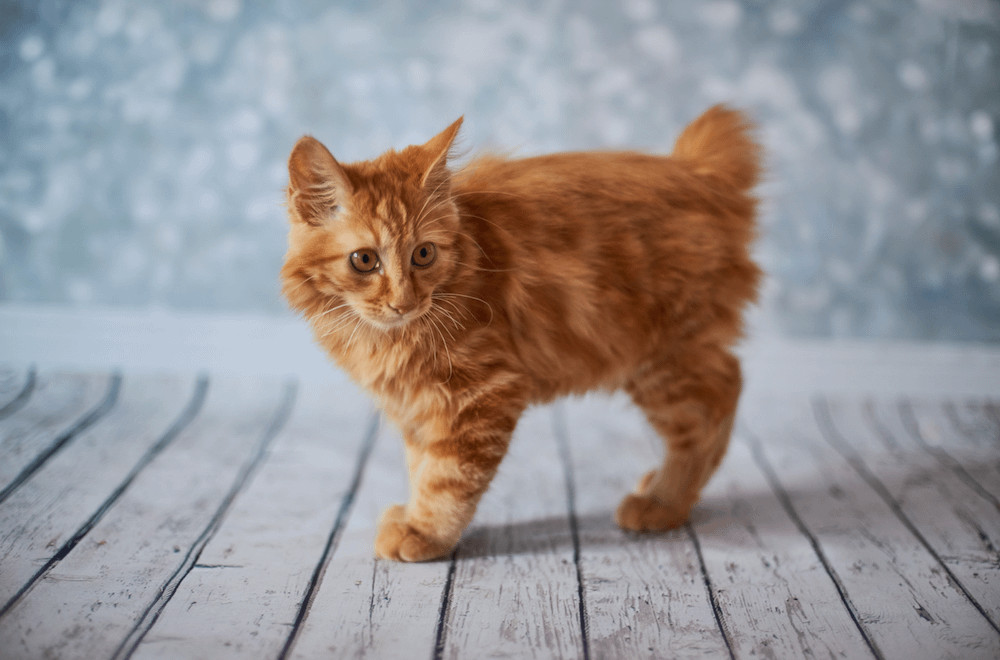 American Bobtail exotic cat breed
American Bobtail exotic cat breed
The American Bobtail cat developed their distinctive short tail naturally, possibly as a genetic adaptation in their native American Southwest environment. This bobbed tail, along with their often tabby coat patterns and sturdy build, gives them a bobcat-like appearance.
Despite their wild look, American Bobtails are thoroughly domestic and known for being gentle, adaptable, and devoted family pets. They are playful, intelligent, and even known to enjoy games like fetch. They mature slowly, reaching full size (up to 16 pounds) around 3 years old.
Kurilian Bobtail
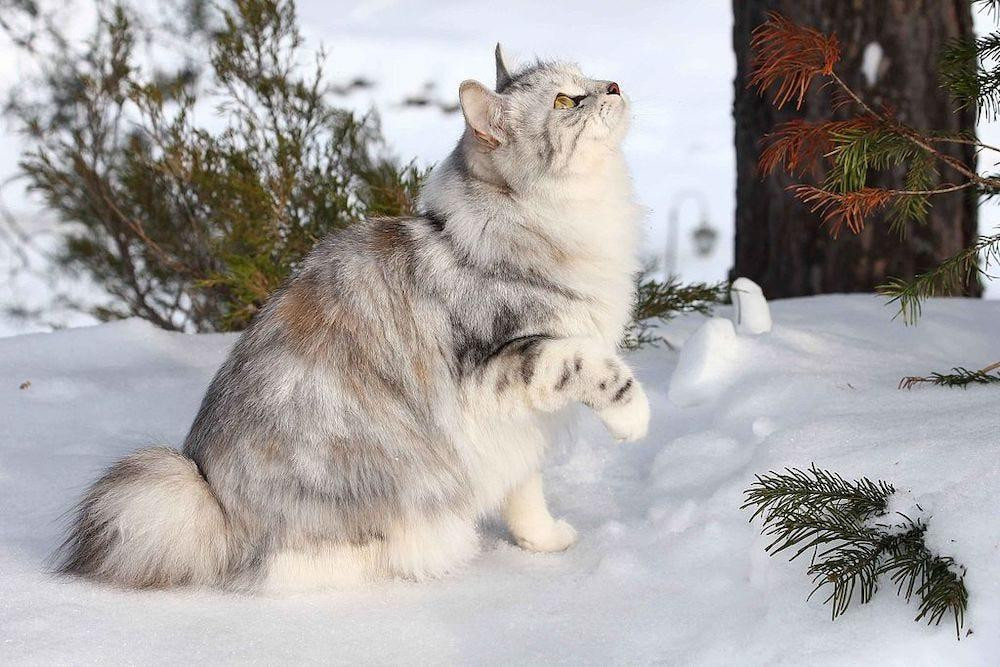 Kurilian Bobtail exotic cat breed
Kurilian Bobtail exotic cat breed
The Kurilian Bobtail is a natural breed originating from Russia’s Kuril Islands and Sakhalin Island. Their most striking feature is their short, pom-pom-like tail, which, combined with their muscular build, can give them a lynx-like appearance. They were brought to mainland Russia in the mid-20th century.
Kurilian Bobtails are known for their love of water, their excellent mousing skills, and their affectionate and gentle personalities. They are adaptable and sociable cats, making them well-suited to family life.
Manx
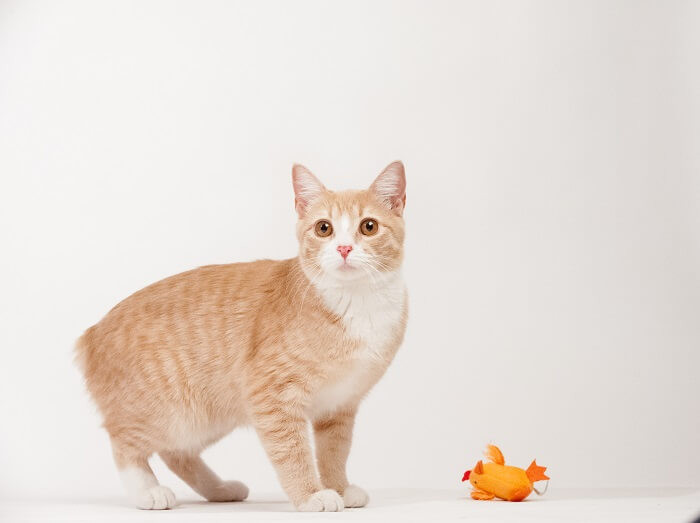 Manx exotic cat breed
Manx exotic cat breed
The Manx cat is famous for its taillessness, a genetic mutation that originated on the Isle of Man. While not directly resembling a bobcat in coat pattern, their lack of tail and sturdy build can evoke a wilder appearance compared to fully tailed cats. Historically, they were valued as excellent mousers.
Manx cats are known for being affectionate and people-oriented when not on hunting duty. However, the tailless gene can be associated with health issues, including spinal problems. Adopting a Manx from a rescue organization is often recommended to avoid supporting unethical breeding practices.
Pixie-bob
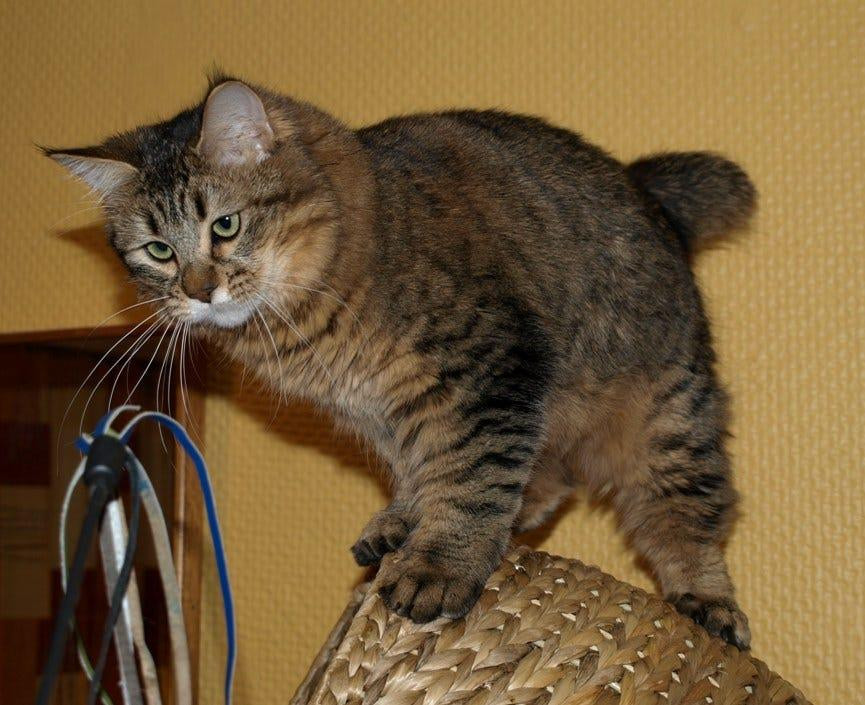 Pixiebob exotic cat breed
Pixiebob exotic cat breed
The Pixie-bob is specifically bred to resemble the wild Coastal Red Bobcat found in the Pacific Northwest. While folklore suggests bobcat ancestry, they are purely domestic cats with a naturally occurring bobtail mutation. Breeders have further emphasized bobcat-like features in their appearance.
Pixie-bobs are unique as the only breed that accepts polydactyly (extra toes) in their breed standard. They come in both short and longhaired varieties and are known for their loyal, dog-like personalities. They are often described as intelligent, playful, and affectionate family companions.
Embracing the Exotic Cat Breed Experience
Exotic house cat breeds offer a captivating way to bring the beauty of wild felines into your home responsibly. Each breed has its unique charm, temperament, and care needs. If you’re captivated by these magnificent cats, remember to research thoroughly, consider the specific requirements of your chosen breed, and ensure you can provide a loving and enriching environment.
For those ready to welcome a feline friend, remember to explore local shelters, rescue organizations, and responsible breeders. And if you are ready to adopt any cat, consider reading our guide on adopting a cat to ensure a smooth transition for both you and your new exotic companion!
Photo credits:
- Toyger: © Heikki Siltala / Wikimedia Commons / CC-BY-SA-3.0
- Cheetoh: © Chris Rue / Wikimedia Commons / CC-BY-SA-4.0
- Highlander: © DigitalDirt / Wikimedia Commons / CC-BY-SA-4.0
- Chausie: © Wilczakrew / Wikimedia Commons / CC-BY-SA-3.0
- Kurilian Bobtail: © TRUE KURILIANS / Wikimedia Commons / CC-BY-SA-4.0
- Pixie-bob: © Donna Cox / Wikimedia Commons / CC-BY-3.0
[

